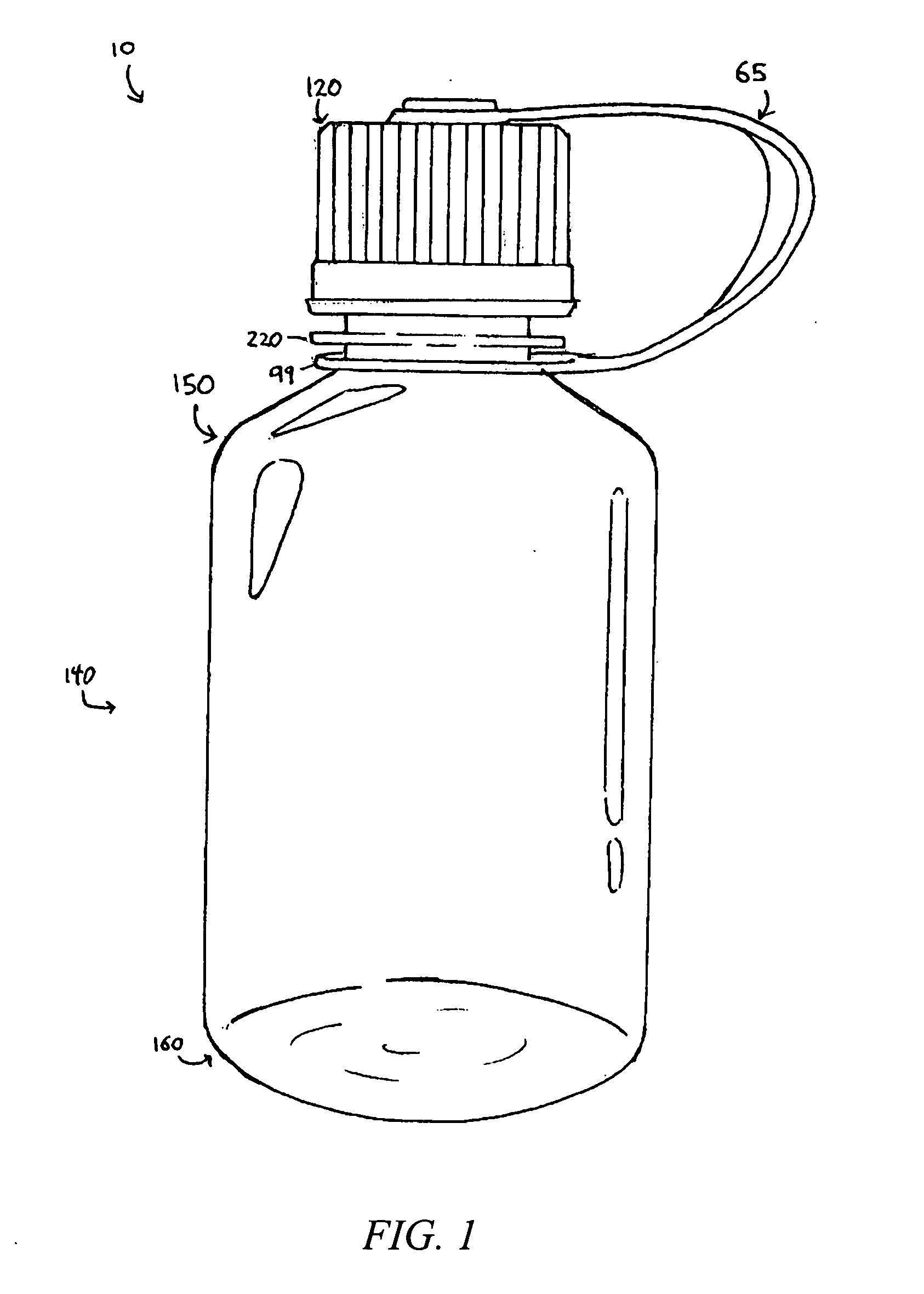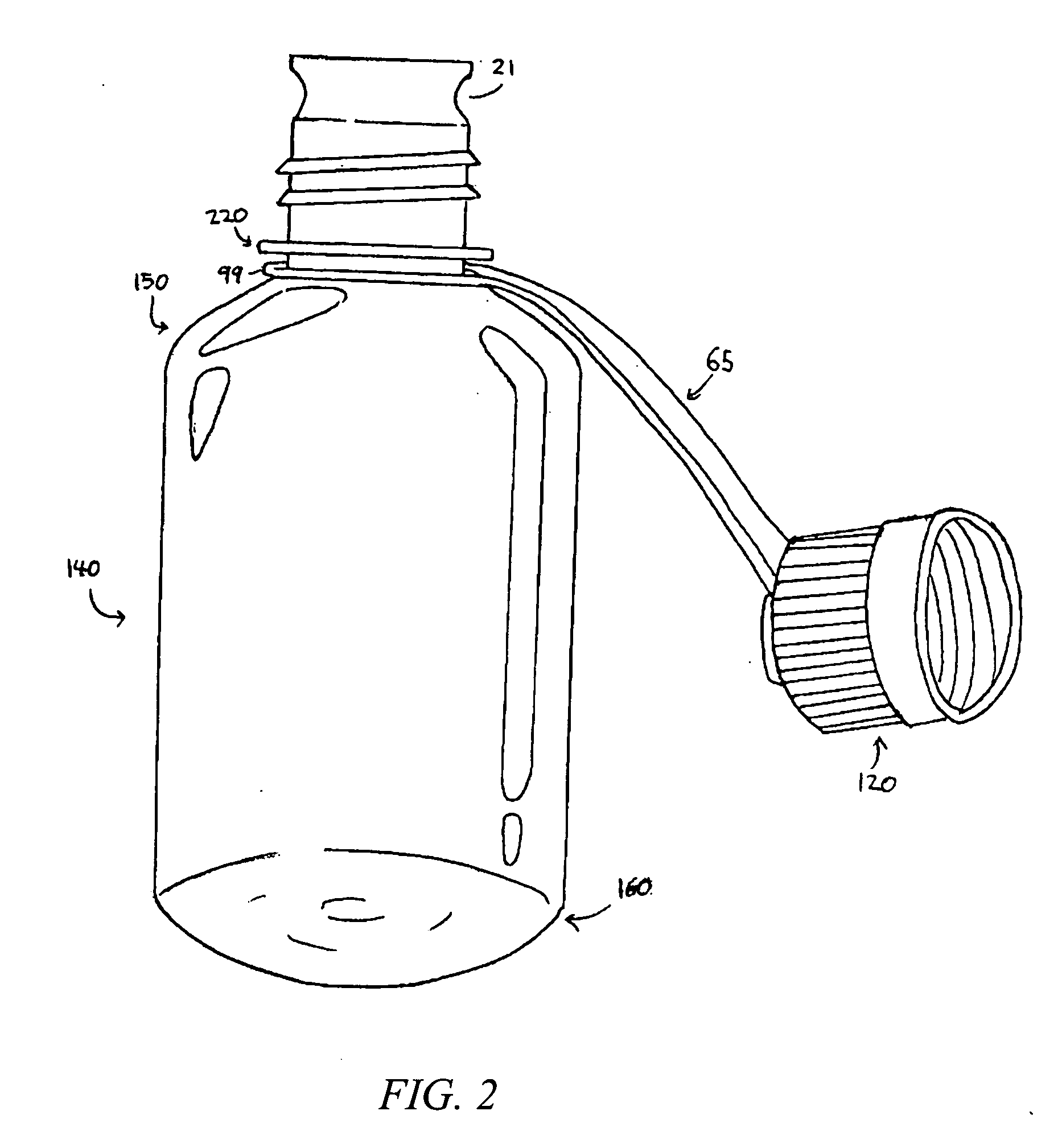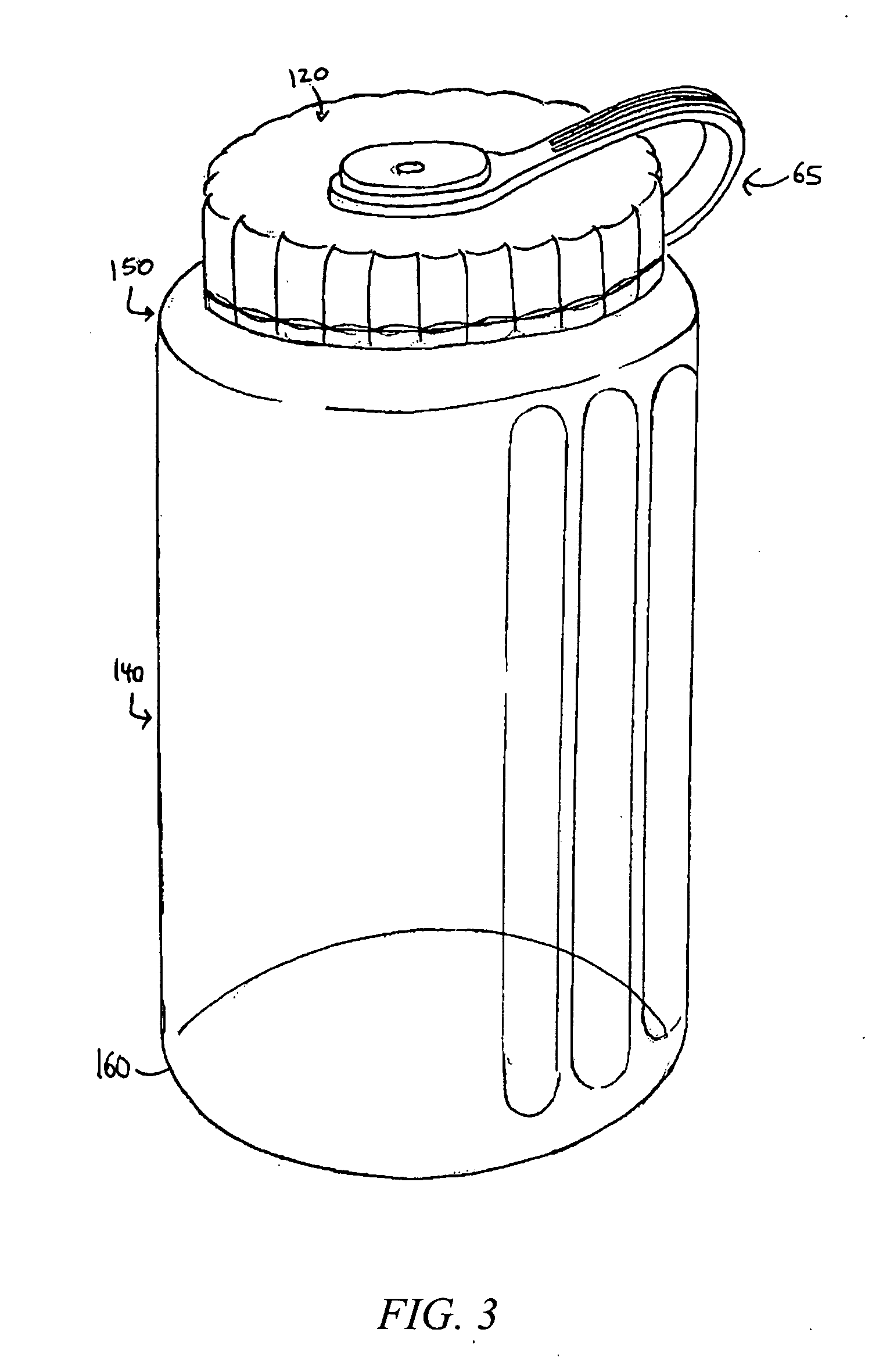Multipurpose lab vessel and method
a lab vessel and multi-purpose technology, applied in laboratory equipment, chemistry equipment and processes, manufacturing tools, etc., can solve the problems of significant damage, severe burns, and cost of time and money, and achieve the effect of reducing the number of contaminations
- Summary
- Abstract
- Description
- Claims
- Application Information
AI Technical Summary
Benefits of technology
Problems solved by technology
Method used
Image
Examples
Embodiment Construction
[0017] The present invention can be formed in a variety of shapes and sizes. Figure one shows a small bottle having a narrow mouth and small cap. Figure eight shows a larger bottle having a wide mouth and a larger cap with the sidewall bearing a swirl design.
[0018] The bottle is created by an injection blow molding process. The injection blow molding process begins with an injection step where plastic is injected into an injection mold, a blow mold step where plastic is injected into a blow mold and a final step where the finished product is ejected from the blow mold.
[0019] The shoulder arc is the junction of the shoulder and vertical cylindrical portion of the bottle. The shoulder arc preferably has a radius. The base arc preferably has a radius also and is a junction of the vertical cylindrical portion of the bottle and the base. The base is commonly circular in shape having a base rim.
[0020] Injecting plastic from the container base into a first mold or preform mold forms a p...
PUM
| Property | Measurement | Unit |
|---|---|---|
| thickness | aaaaa | aaaaa |
| temperatures | aaaaa | aaaaa |
| volume | aaaaa | aaaaa |
Abstract
Description
Claims
Application Information
 Login to View More
Login to View More - R&D
- Intellectual Property
- Life Sciences
- Materials
- Tech Scout
- Unparalleled Data Quality
- Higher Quality Content
- 60% Fewer Hallucinations
Browse by: Latest US Patents, China's latest patents, Technical Efficacy Thesaurus, Application Domain, Technology Topic, Popular Technical Reports.
© 2025 PatSnap. All rights reserved.Legal|Privacy policy|Modern Slavery Act Transparency Statement|Sitemap|About US| Contact US: help@patsnap.com



